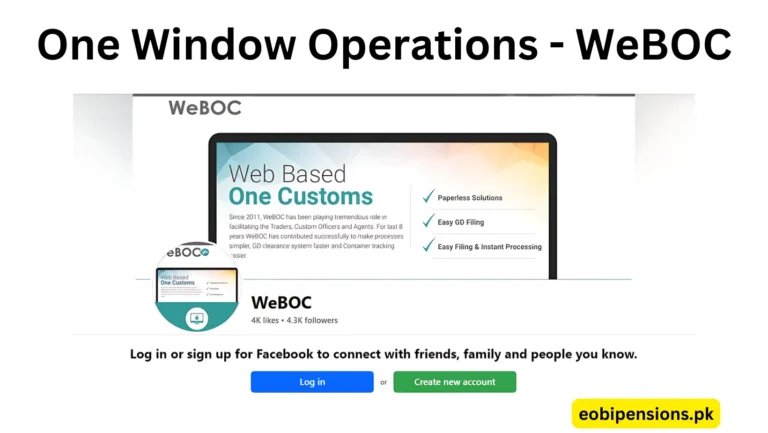Claiming EOBI Pension After the Death of a Pensioner

Navigating the process of claiming EOBI pension after the death of a pensioner can be complicated and emotionally taxing. This comprehensive guide aims to simplify the steps involved and provide the necessary information for legal heirs to successfully claim the pension.
The Employees’ Old-Age Benefits Institution (EOBI) offers pensions to retired individuals to support them in their post-retirement years. In the unfortunate event of the pensioner’s death, the benefits can be transferred to eligible family members. This article covers everything from the required documents to the steps involved in the claim process, including specific procedures for widows, sons, and daughters.
How to Transfer Payment to Daughter
If the pensioner’s daughter is the legal heir, she can claim the pension by following these steps:
- Obtain Documentation: Gather the original death certificate of the EOBI pensioner, and ensure you have a copy of the deceased’s National Identity Card.
- Heir Identification: Secure the original or attested copy of the legal heir’s (daughter’s) National Identity Card.
- Pension Claim Form: Fill out the pension claim form accurately.
- Affidavit: Prepare an affidavit of the legal heirs on stamp paper, attested by a notary public.
- Succession Certificate: Obtain a succession certificate or family registration certificate.
- Proof of Relationship: Provide proof of relationship with the deceased pensioner.
- Submission: Submit all documents to the nearest EOBI office.
EOBI Pension Rules After Death
The EOBI pension rules stipulate that the pension can be transferred to immediate family members upon the death of the pensioner. The eligible heirs include the widow, children, and in some cases, parents. The pension amount, however, will be adjusted according to the rules and regulations set by the EOBI.
Read the EOBI Pension rules in Urdu here.
EOBI Pension Transfer to Widow Procedure
For a widow to claim the EOBI pension:
- Documentation: Obtain the death certificate of the pensioner and copies of both the deceased’s and the widow’s National Identity Cards.
- Claim Form: Complete the pension claim form.
- Affidavit and Certificates: Prepare an affidavit and obtain a succession certificate or family registration certificate.
- Submission: Submit all required documents to the EOBI office.
EOBI Pension After Death in Urdu
For detailed instructions in Urdu, you can visit the EOBI official website which provides guidelines and forms in Urdu. Please read the notification below.

EOBI Pension Check
You can check the status of claiming EOBI pension after the death of a pensioner by visiting the EOBI website or contacting their helpline. Regular updates will be provided once the claim has been submitted.
EOBI Pension Calculator
To calculate the pension benefits, you can use the EOBI pension calculator available on our website. This tool helps you understand the approximate amount you may receive based on various parameters.
How Do I Claim My EOBI Pension?
To claim your EOBI pension, follow these steps:
- Gather Documents: Collect all necessary documents such as death certificate, National Identity Cards, claim form, affidavit, and proof of relationship.
- Complete the Forms: Ensure all forms are filled accurately.
- Submit to EOBI Office: Submit the documents to the EOBI office and follow up for updates.
What is the EOBI Pension Rule?
The EOBI pension rule allows the transfer of pension benefits to eligible heirs such as the widow, children, and sometimes parents, ensuring financial support continues after the pensioner’s death.
FAQs
Conclusion
Claiming EOBI Pension After the Death of a Pensioner involves a series of steps and documentation. By following this guide, you can ensure a smooth and successful claim process. For personalized assistance, contact the EOBI helpline or visit their official website.
For further assistance for claiming EOBI pension after the death of a pensioner feel free to reach out to the EOBI helpline at 0800-00321 or email them at [email protected].
By understanding and following these guidelines, you can ensure that the transition of benefits is smooth and efficient, providing financial stability for the deceased pensioner’s family.



![SPSC Portal Login/Sign Up – [Step-By-Step Registration Guide] 5 SPSC Portal LoginSign Up](https://eobipensions.pk/wp-content/uploads/2024/07/SPSC-Portal-LoginSign-Up-768x433.webp)


